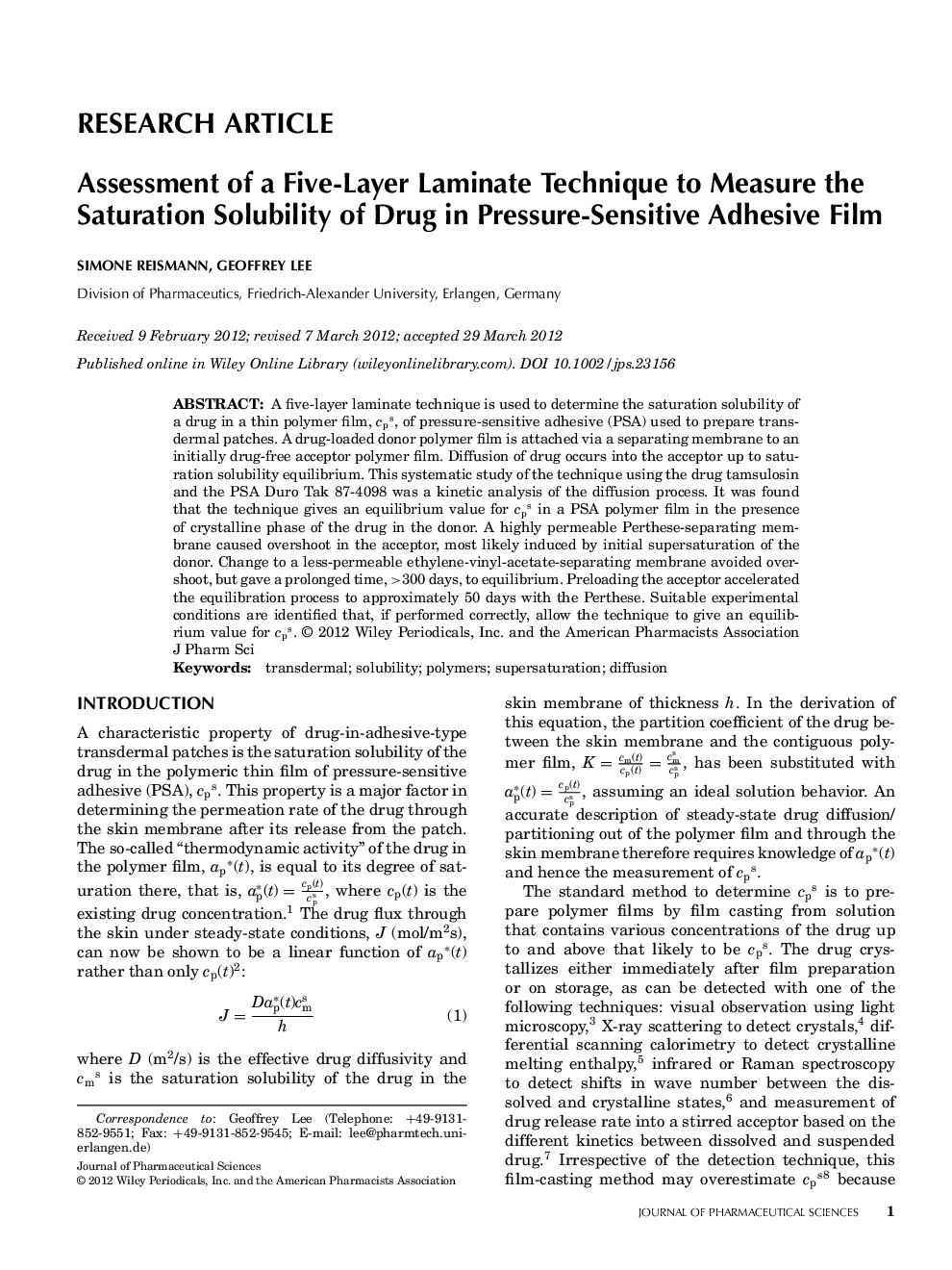| Article ID | Journal | Published Year | Pages | File Type |
|---|---|---|---|---|
| 2485067 | Journal of Pharmaceutical Sciences | 2012 | 11 Pages |
Abstract
A five-layer laminate technique is used to determine the saturation solubility of a drug in a thin polymer film, cps, of pressure-sensitive adhesive (PSA) used to prepare transdermal patches. A drug-loaded donor polymer film is attached via a separating membrane to an initially drug-free acceptor polymer film. Diffusion of drug occurs into the acceptor up to saturation solubility equilibrium. This systematic study of the technique using the drug tamsulosin and the PSA Duro Tak 87-4098 was a kinetic analysis of the diffusion process. It was found that the technique gives an equilibrium value for cps in a PSA polymer film in the presence of crystalline phase of the drug in the donor. A highly permeable Perthese-separating membrane caused overshoot in the acceptor, most likely induced by initial supersaturation of the donor. Change to a less-permeable ethylene-vinyl-acetate-separating membrane avoided overshoot, but gave a prolonged time, >300Â days, to equilibrium. Preloading the acceptor accelerated the equilibration process to approximately 50Â days with the Perthese. Suitable experimental conditions are identified that, if performed correctly, allow the technique to give an equilibrium value for cps. © 2012 Wiley Periodicals, Inc. and the American Pharmacists Association
Related Topics
Health Sciences
Pharmacology, Toxicology and Pharmaceutical Science
Drug Discovery
Authors
Simone Reismann, Geoffrey Lee,
